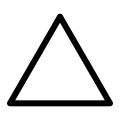Molecule
Molecule
A molecule is the smallest identifiable unit of a chemical compound that has the properties of that compound and can exist in a free state. Molecules are composed of atoms that are held together by chemical bonds. These bonds form as a result of the sharing or exchange of electrons among atoms.
Structure and properties[edit]
The structure of a molecule is determined by the number and types of atoms in it, and by the bonds that hold these atoms together. The properties of a molecule, such as its reactivity, boiling point, and acidity, are largely determined by its structure.
Molecular structure[edit]
The structure of a molecule can be described in terms of its geometry, the arrangement of its atoms in space, and its connectivity, the way its atoms are bonded together.
Molecular properties[edit]
The properties of a molecule are determined by its structure and by the nature of the atoms and bonds in it. These properties include its reactivity, its physical properties, such as its phase (solid, liquid, or gas) and boiling point, and its chemical properties, such as its acidity or basicity.
Types of molecules[edit]
There are many types of molecules, ranging from simple diatomic molecules, such as oxygen (O2) and hydrogen (H2), to complex organic molecules, such as proteins and DNA.
See also[edit]
References[edit]
<references />
|
|
|
Molecule[edit]
-
PTCDA AFM
-
Pentacene on Ni(111) STM
-
TOAT AFM
-
Fire symbol (alchemical)
-
Earth symbol (alchemical)
-
Air symbol (alchemical)
-
Water symbol (alchemical)
-
Gaudins volume diagrams
-
CH4 hybridization
-
Covalent bond hydrogen
-
NaF
-
Atisane3
Ad. Transform your life with W8MD's Budget GLP-1 injections from $75


W8MD offers a medical weight loss program to lose weight in Philadelphia. Our physician-supervised medical weight loss provides:
- Weight loss injections in NYC (generic and brand names):
- Zepbound / Mounjaro, Wegovy / Ozempic, Saxenda
- Most insurances accepted or discounted self-pay rates. We will obtain insurance prior authorizations if needed.
- Generic GLP1 weight loss injections from $75 for the starting dose.
- Also offer prescription weight loss medications including Phentermine, Qsymia, Diethylpropion, Contrave etc.
NYC weight loss doctor appointmentsNYC weight loss doctor appointments
Start your NYC weight loss journey today at our NYC medical weight loss and Philadelphia medical weight loss clinics.
- Call 718-946-5500 to lose weight in NYC or for medical weight loss in Philadelphia 215-676-2334.
- Tags:NYC medical weight loss, Philadelphia lose weight Zepbound NYC, Budget GLP1 weight loss injections, Wegovy Philadelphia, Wegovy NYC, Philadelphia medical weight loss, Brookly weight loss and Wegovy NYC
|
WikiMD's Wellness Encyclopedia |
| Let Food Be Thy Medicine Medicine Thy Food - Hippocrates |
Medical Disclaimer: WikiMD is not a substitute for professional medical advice. The information on WikiMD is provided as an information resource only, may be incorrect, outdated or misleading, and is not to be used or relied on for any diagnostic or treatment purposes. Please consult your health care provider before making any healthcare decisions or for guidance about a specific medical condition. WikiMD expressly disclaims responsibility, and shall have no liability, for any damages, loss, injury, or liability whatsoever suffered as a result of your reliance on the information contained in this site. By visiting this site you agree to the foregoing terms and conditions, which may from time to time be changed or supplemented by WikiMD. If you do not agree to the foregoing terms and conditions, you should not enter or use this site. See full disclaimer.
Credits:Most images are courtesy of Wikimedia commons, and templates, categories Wikipedia, licensed under CC BY SA or similar.
Translate this page: - East Asian
中文,
日本,
한국어,
South Asian
हिन्दी,
தமிழ்,
తెలుగు,
Urdu,
ಕನ್ನಡ,
Southeast Asian
Indonesian,
Vietnamese,
Thai,
မြန်မာဘာသာ,
বাংলা
European
español,
Deutsch,
français,
Greek,
português do Brasil,
polski,
română,
русский,
Nederlands,
norsk,
svenska,
suomi,
Italian
Middle Eastern & African
عربى,
Turkish,
Persian,
Hebrew,
Afrikaans,
isiZulu,
Kiswahili,
Other
Bulgarian,
Hungarian,
Czech,
Swedish,
മലയാളം,
मराठी,
ਪੰਜਾਬੀ,
ગુજરાતી,
Portuguese,
Ukrainian













